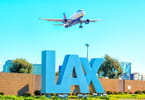As the industry’s executives gather this week at the Regional Airline Assn.’s annual conference in Indianapolis, they – and some of the small communities they serve – have plenty to worry about.
Regional airline usage has soared this decade, particularly with mainline carriers looking to international routes to generate profits and shifting a lot of their domestic service to the smaller aircraft, in part to feed traffic to their international routes. From 2000 to 2007, regional carrier domestic capacity increased 142% even as mainline carrier domestic capacity shrank by 4.2%, according to FAA figures, and the RAA notes that regional carriers now account for about 50% of domestic scheduled service departures. The RAA also says about 70% of the nation’s scheduled service airports have service only from regional airlines.
But that might not help the regional carriers or small communities now that the state of the U.S. regional airline industry is just as uncertain and unsettled for the major carriers they rely on for most of their business. The majors have been announcing big cuts in domestic capacity after the summer travel season, and most industry observers believe they’ll have to make even deeper cuts by the time fall rolls around (at JP Morgan, analyst Jamie Baker states that the industry has to shrink by about 20% to achieve profitability). Skyrocketing fuel costs are making many regional carrier aircraft, particularly 50-seat regional jets, money-losers for many of the routes on which they have been used by major carriers, which in most cases reimburse the regionals for the fuel expenses of those flights.
Consolidation also carries a risk: Most of the major airlines contract regional carriers in large part to fly feeder routes to their hubs, but mergers could eliminate some of those hubs, leaving merged airlines looking to reduce some regional capacity. Furthermore, in the face of the escalating price of fuel, a weakening economy and a tight credit market, more airline bankruptcies beyond the rapid-fire filings by ATA, Aloha, Skybus and Frontier remain possible – even likely, according to some industry analysts. The major carriers are among those at risk: Baker noted to investors Apr. 23 that “no U.S. recession has ever failed to generate at least one legacy bankruptcy.”
And added to this volatile mix are the concerns that regional carriers have about government policies, such as the Bush administration proponents of congestion pricing at airports, which could price smaller aircraft out of some markets.
In a relatively small example of the risk regionals face from bankruptcies, Republic and Frontier in April negotiated an agreement for a gradual phase-out by June 23 of the 12 E170 70-seat aircraft Republic operates for Frontier under their airline services agreement.
The loss of the agreement will cost Republic $6 million in monthly revenue, and it will have to sell those 12 aircraft along with five others it had committed to Frontier or place them into service with other carriers. For Republic, this could prove relatively minor. Chairman, President/CEO Bryan Bedford said Apr. 24 that there are plenty of potential foreign buyers expressing interest. But the situation does illustrate the risk posed for all regional carriers by the bankruptcy of a larger carrier or bigger customer.
Regional carriers do have a safety net in that many of them are in long-term contracts with their major carrier partners that could protect them from the worst consequences for years – assuming those partners stay in business. Many also have minimum use guarantees in their deals, limiting how much the majors can cut. Nonetheless, the majors still can reduce their regional jet usage somewhat, and they also may look for loopholes.
In that light, Mesa Air Group’s legal battle with Delta Air Lines bears watching. Delta recently announced the return of 34 50-seat jets to Mesa, alleging Mesa was completing such a low percentage of its flights that it violated the performance terms of its contract. Mesa contests this and has sued Delta, arguing that its completion factor dropped because of decisions Delta made about the Mesa-operated Delta Connection flights.
“If anything, Delta’s action underscores the intent among most legacy airlines to distance themselves from unprofitable regional flying wherever possible,” JP Morgan’s Baker told investors.
Michael Boyd, president of The Boyd Group aviation researching and forecasting consultancy, believes the major carriers will “use any means possible” to unload the 50-seat aircraft.
“Hard fact: There are more 50-seat jets than can be economically flown,” Boyd wrote in January. “Hard fact: That means cutbacks in the number of operators.” Since January, Boyd told Aviation Week & Space Technology on Apr. 22, the situation has worsened, adding, “This is a sector that is slowly going to shrink.”
The general challenges facing regional carriers, however, do not apply equally to all. One advantage might go to carriers that have been getting rid of 50-seaters in favor of bigger regional jets that provide a better return, even if their size makes them unfit for some small markets that don’t generate enough demand.
Republic Airways Holdings, for example, has been moving away from the 50-seat jet for years, so 70-86-seat Embraer E-Jets now account for nearly half of its 226-aircraft fleet. Republic Airways Holdings, which owns Republic, Chautauqua and Shuttle America, also has service agreements with five airlines even with the loss of Frontier, and just reported a $20.2-million first-quarter profit.
Losing Frontier’s business, Bedford said, is an example of why it is particularly important now for a regional carrier to have a diverse revenue base – just as the overall state of the industry argues for an even more laser-like focus on being the most reliable and cost-efficient of the regional carriers.
Mesa Air Group, on the other hand, is considered vulnerable by many analysts even though it is one of the largest independently owned regionals in the U.S.
“We think Mesa has significant liquidity issues, and it is our view that the company could be a candidate for bankruptcy in the next 12 months,” Standard & Poor’s analyst Jim Corridore said in an analysis Apr. 14 (S&P, like AW&ST, is a unit of The McGraw-Hill Companies).
Mesa’s Delta Connection contract, he noted, covers 19% of Mesa’s total capacity, and it might have to lower its contract rates to replace lost business. Mesa also is holding a special meeting May 8 seeking shareholder approval to issue stock to meet an upcoming debt repayment.
SkyWest’s recent bid to acquire ExpressJet – and Continental’s entanglement in that proposed deal – is indicative of the sector’s unsettled state, as well as the possibility that regional carrier consolidation will be one way they try to cope. SkyWest negotiated a new capacity purchase agreement with Continental to keep ExpressJet flying as Continental Express, but at much lower rates, if SkyWest acquires its competitor. Continental, in turn, warned ExpressJet that if it continues operating independently and refuses to offer a similar rate reduction, Continental plans to slash business with the carrier by about 25% starting in December 2009. The Continental deal accounts for the majority of ExpressJet’s revenue.
Mike Kraupp, SkyWest’s treasurer and vice president of finance, said he believes these challenging times will present opportunities for regional airlines “that are stronger and have more resources,” such as his own.
“There are those within the regional airline industry that are struggling. From that perspective, we would look at any and all opportunities,” he said. Within the next few years, he predicted, “you’ll see less regional players rather than more.”
“I think it’s a time when people have to take stock of where they’re at,” Kraupp added. “But we do consider ourselves fortunate, with a solid management team and financial resources. We believe we’re survivors. We’re able to be very flexible and adapt to change.”
In spite of the industry’s uncertainties, RAA President Roger Cohen says he remains optimistic.
“It’s a tough time. You just have to work your way through it,” he says. The regional airline industry has repeatedly reinvented itself as conditions warranted it, he adds.
“With the business model that has developed, particularly since 9/11, with sophisticated, efficient, very forward-thinking regional airlines operating great airplanes in seamless partnership with the major airlines, we’ve been able to create and nurture a system that America has come to depend upon,” he says.
“If the recession doesn’t scuttle it, the business model is a sound one,” he continues. “If fuel costs come down and the economy picks up and we create the infrastructure to accommodate demand, then regional airlines are poised to help meet that need that America has.”
aviationweek.com
WHAT TO TAKE AWAY FROM THIS ARTICLE:
- In a relatively small example of the risk regionals face from bankruptcies, Republic and Frontier in April negotiated an agreement for a gradual phase-out by June 23 of the 12 E170 70-seat aircraft Republic operates for Frontier under their airline services agreement.
- Skyrocketing fuel costs are making many regional carrier aircraft, particularly 50-seat regional jets, money-losers for many of the routes on which they have been used by major carriers, which in most cases reimburse the regionals for the fuel expenses of those flights.
- Regional airline usage has soared this decade, particularly with mainline carriers looking to international routes to generate profits and shifting a lot of their domestic service to the smaller aircraft, in part to feed traffic to their international routes.






















